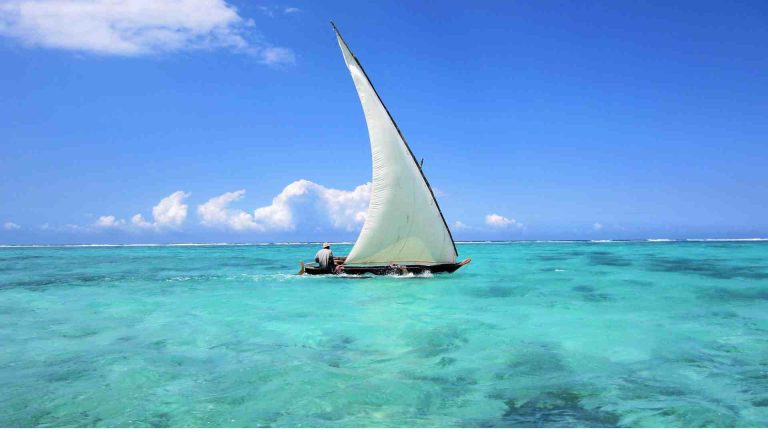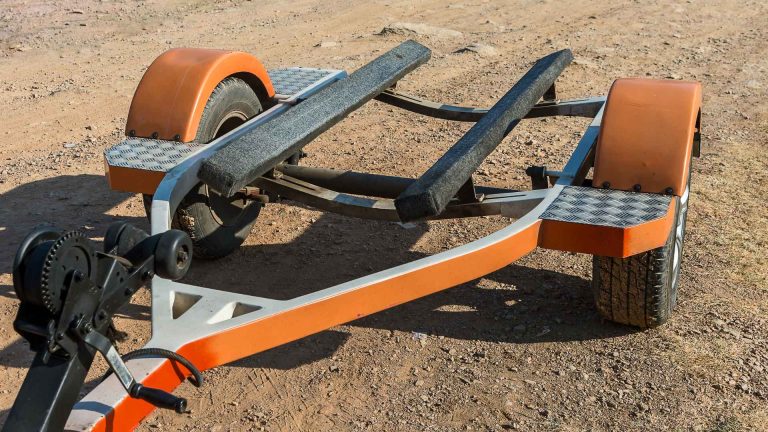GT52 vs GT54 – Unleashing the Ultimate Sonar Revo
Compare GT52 vs GT54 transducers for fishing sonar. Discover their features, performance, and which is best for shallow or deep water.
Sonar transducers are the backbone of modern fishing technology, transforming how anglers locate fish and navigate underwater environments. Among Garmin’s top offerings, the GT52 and GT54 transducers stand out for their advanced capabilities, catering to anglers seeking precision and clarity. This comprehensive comparison dives into the technical specifications, performance differences, and practical applications of the GT52 and GT54, helping you decide which transducer is the ultimate choice for your fishing adventures. We’ll also touch on related models like the GT51 and GT56 to provide a broader context, ensuring you have all the information needed to optimize your sonar setup.
Introduction to Sonar Transducers
Sonar transducers are critical for anglers, providing detailed underwater images to locate fish, structures, and bottom contours. Garmin’s GT52 and GT54 transducers are designed for different fishing scenarios, offering features like CHIRP sonar, ClearVü, and SideVü scanning. The GT52 is known for its versatility, while the GT54 introduces ultra-high-definition (UHD) imaging for superior clarity. This article explores their differences, performance metrics, and ideal use cases, helping anglers make informed decisions.
Overview of the GT52 Transducer
The GT52 is a versatile, all-in-one transducer designed for anglers who fish in varied environments. It combines traditional CHIRP sonar, ClearVü, and SideVü scanning, offering a comprehensive view of the underwater world.
Key Features of the GT52
- Traditional CHIRP Sonar: Operates at 250W with frequencies of 50/77/200 kHz (low, mid, high CHIRP) for excellent fish detection and bottom tracking.
- ClearVü and SideVü: Uses 455/800 kHz frequencies with 350W power, providing detailed images of structures and fish up to 500 feet on each side.
- Cone Angles: SideVü at 2.0° x 50° at 455 kHz, ensuring wide coverage.
- Depth Capability: Effective up to 800 feet for traditional sonar and 500 feet for ClearVü/SideVü, making it suitable for both shallow and moderately deep waters.
- Mounting Options: Transom or trolling motor mount for flexible installation.
The GT52’s high-wide CHIRP technology offers excellent target separation, making it ideal for identifying fish schools and structures in diverse fishing conditions, from lakes to coastal waters.
Overview of the GT54 Transducer
The GT54, specifically the GT54UHD-TM, is a step up, incorporating ultra-high-definition imaging for enhanced clarity. It’s tailored for anglers who prioritize detailed visuals, particularly in shallow waters.
Key Features of the GT54
- Traditional CHIRP Sonar: Operates at 350W with 150-240 kHz (high-wide CHIRP), offering improved sensitivity over the GT52.
- ClearVü and SideVü: Supports 455/800 kHz at 350W, with UHD SideVü at 1.2 MHz (350W) for crystal-clear images.
- Cone Angles: SideVü at 1.62° x 50° at 455 kHz, slightly narrower than the GT52 but optimized for sharper images.
- Depth Capability: Limited to 125 feet for UHD SideVü, 200 feet for ClearVü, and 800 feet for traditional sonar. Best suited for shallow waters (under 100 feet).
- Mounting Options: Transom or trolling motor mount, similar to the GT52.
The GT54’s UHD imaging provides unparalleled detail, making it a favorite for anglers fishing in clear, shallow waters where identifying individual fish and structures is critical.
Technical Comparison
To understand the differences, let’s break down the key specifications:
| Feature | GT52 | GT54 |
|---|---|---|
| Traditional CHIRP Power | 250W | 350W |
| CHIRP Frequencies | 50/77/200 kHz | 150-240 kHz |
| ClearVü/SideVü Power | 350W | 350W |
| ClearVü/SideVü Frequencies | 455/800 kHz | 455/800 kHz, 1.2 MHz (UHD SideVü) |
| SideVü Cone Angle | 2.0° x 50° (455 kHz) | 1.62° x 50° (455 kHz) |
| Max Depth (Traditional) | 800 feet | 800 feet |
| Max Depth (ClearVü) | 500 feet | 200 feet |
| Max Depth (SideVü) | 500 feet | 125 feet (UHD), 500 feet (455/800 kHz) |
| Price (Approximate) | $299.99 | $399.99 |
Power and Sensitivity
The GT54’s 350W traditional CHIRP element is more powerful than the GT52’s 250W, offering greater sensitivity for detecting subtle targets, such as smaller fish or baitfish schools. This makes the GT54 superior for 2D sonar in shallow to moderate depths.
Imaging Clarity
The GT54’s UHD SideVü at 1.2 MHz delivers significantly sharper images than the GT52’s standard SideVü at 455/800 kHz. However, the GT54’s narrower cone angle (1.62° vs. 2.0°) slightly reduces coverage but enhances detail. At 455 kHz, the GT54 outperforms the GT52 due to optimized element design, as confirmed by user comparisons showing clearer images of structures like submerged trees.
Depth Performance
The GT52 excels in deeper waters (up to 500 feet for ClearVü/SideVü), while the GT54’s UHD mode is limited to 125 feet, making it less effective beyond 100 feet, especially in saltwater. For traditional sonar, both handle depths up to 800 feet, but the GT52’s lower frequencies (50/77 kHz) are better for deep-water bottom tracking.
Practical Applications
GT52: The Versatile All-Rounder
The GT52 is ideal for anglers who fish in varied environments, such as lakes, rivers, or coastal waters with depths up to 500 feet. Its wide frequency range and broader SideVü cone angle make it effective for scanning large areas and detecting fish schools. It’s a cost-effective choice for those who don’t need ultra-high-definition imaging but want reliable performance across multiple scenarios.
Best Use Cases:
- General fishing in lakes and rivers (20-500 feet).
- Scanning for fish schools and structures in moderately deep waters.
- Budget-conscious anglers seeking versatility.
GT54: The Shallow-Water Specialist
The GT54 shines in shallow, clear waters (under 100 feet), where its UHD SideVü provides exceptional detail for identifying individual fish, vegetation, and structures. Its higher power and optimized elements make it a top choice for kayak anglers or those fishing in clear lakes and coastal areas. However, its limited depth range for UHD imaging makes it less suitable for deep-water fishing.
Best Use Cases:
- Shallow-water fishing (8-100 feet) in clear conditions.
- Kayak fishing where detailed imaging is critical.
- Anglers prioritizing clarity over range.
Comparison with Other Transducers
To provide context, let’s briefly compare the GT52 and GT54 with the GT51 and GT56:
GT51
- Power: 600W traditional CHIRP (50/77/200 kHz), 500W ClearVü/SideVü (260/455 kHz).
- Depth: Up to 1,500 feet (traditional), 1,000 feet (ClearVü/SideVü).
- Price: ~$499.99.
- Best For: Deep-water fishing (e.g., offshore or Great Lakes) due to its high power and larger elements, which outperform both GT52 and GT54 in sensitivity and depth.
GT56
- Power: 350W traditional CHIRP (150-240 kHz), 350W ClearVü/SideVü (455/800 kHz, 1.2 MHz UHD).
- Depth: Slightly better than GT54, with improved UHD range (~150 feet).
- Price: ~$449.99.
- Best For: Similar to GT54 but with slightly better imaging and depth, making it a premium choice for shallow to moderate depths.
| Transducer | Traditional Power | ClearVü/SideVü Power | Max Depth (UHD) | Price |
|---|---|---|---|---|
| GT51 | 600W | 500W | N/A | $499.99 |
| GT52 | 250W | 350W | N/A | $299.99 |
| GT54 | 350W | 350W | 125 feet | $399.99 |
| GT56 | 350W | 350W | 150 feet | $449.99 |
User Experiences and Real-World Performance
Anglers on forums like The Hull Truth and Reddit’s r/kayakfishing have shared valuable insights:
- GT52 vs. GT54 at 455 kHz: Users report the GT54 provides clearer SideVü images at 455 kHz compared to the GT52, despite identical power ratings. This is likely due to the GT54’s optimized element design and narrower cone angle.
- Shallow Water: In 8-25 feet of clear water, the GT54’s UHD mode excels, offering crisp images of fish and structures, ideal for kayak fishing in lakes or rivers.
- Deep Water: The GT52 and GT51 outperform the GT54 in depths over 100 feet, with the GT51’s 600W traditional element being the best for detecting hard-to-see targets in deep water.
For example, a user (SamMule) compared the GT54 and GT50 side by side, noting the GT54’s superior clarity at 455 kHz, even when connected to the same Garmin ECHOMAP Ultra 106sv unit. However, the GT50’s 500W elements provided better range, highlighting trade-offs in power versus clarity.
Compatibility with Garmin Units
Both transducers are compatible with Garmin’s ECHOMAP and GPSMAP series, but the GT54’s UHD features require units like the ECHOMAP Ultra 93sv or 106sv. Older units like the ECHOMAP 73sv (with GT52) may not fully support UHD imaging, limiting the GT54’s potential. For example:
- ECHOMAP Ultra 106sv + GT54: Offers superior imaging at 455/800 kHz and UHD at 1.2 MHz, ideal for shallow-water anglers.
- ECHOMAP 73sv + GT52: Reliable for standard imaging but lacks UHD support.
Anglers upgrading from a 73sv to a 106sv with a GT54 will notice improved clarity at 455/800 kHz, even without UHD, due to the unit’s higher resolution and the GT54’s enhanced elements.
Cost-Benefit Analysis
- GT52 ($299.99): A budget-friendly option for versatile fishing. It’s ideal for anglers who don’t need UHD and fish in varied depths.
- GT54 ($399.99): A premium choice for shallow-water fishing, offering unmatched clarity. The $100 price difference is justified for kayak anglers or those in clear, shallow waters.
- GT56 ($449.99): Slightly better than the GT54, but the marginal improvement may not justify the cost unless you need the extra depth range.
- Panoptix (~$1,400): Offers live sonar for real-time fish tracking but is significantly more expensive and may not replace traditional transducers for all applications.
For anglers on a budget, the GT52 provides excellent value. For those prioritizing clarity in shallow waters, the GT54 is worth the investment.
Chart: Transducer Decision Flow
Below is a decision tree to help choose between the GT52 and GT54:

Choosing the Right Transducer
When to Choose the GT52
- You fish in varied depths (20-500 feet).
- Budget is a concern, and you don’t need UHD imaging.
- You prioritize wider coverage over maximum clarity.
- Your fishing unit doesn’t support UHD (e.g., ECHOMAP 73sv).
When to Choose the GT54
- You fish in shallow, clear waters (8-100 feet).
- You prioritize crystal-clear imaging for identifying fish and structures.
- You use a compatible unit like the ECHOMAP Ultra 106sv.
- You’re willing to invest in premium features for kayak or small-boat fishing.
Considerations for Other Options
- GT51: Choose for deep-water fishing (e.g., offshore) where power and depth are critical.
- GT56: Opt for slightly better UHD performance and depth range, but only if budget allows.
- Panoptix: Ideal for live sonar but requires a significant investment and may not suit all setups.
Conclusion
The GT52 and GT54 are both exceptional transducers, but they cater to different needs. The GT52 is a versatile, cost-effective option for anglers fishing in varied depths, offering reliable performance across multiple scenarios. The GT54, with its UHD imaging and superior clarity, is the go-to choice for shallow-water anglers who demand precision, particularly in clear conditions. By understanding your fishing environment, depth requirements, and equipment compatibility, you can choose the transducer that best enhances your angling experience. Whether you opt for the GT52’s versatility or the GT54’s precision, both promise to elevate your ability to unlock the secrets of the underwater world.
Happy Boating!
Share GT52 vs GT54 – Unleashing the Ultimate Sonar Revo with your friends and leave a comment below with your thoughts.
Read The Ultimate Guide to Sika Primer 207 until we meet in the next article.






